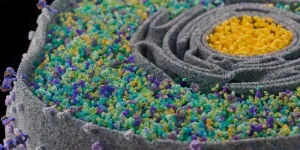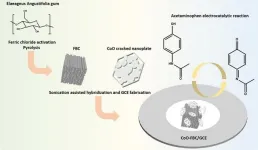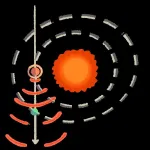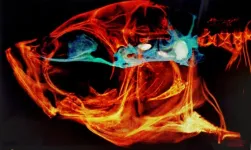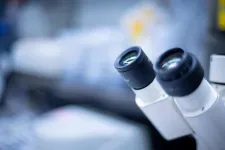(Press-News.org) While marine heatwaves (MHWs) have been studied at the sea surface for more than a decade, new research published today in Nature has found 80 per cent of MHWs below 100 metres are independent of surface events, highlighting a previously overlooked aspect of ocean warming.
The study was conducted by Australia’s national science agency CSIRO and the Chinese Academy of Sciences.
MHWs are prolonged temperature events that can cause severe damage to marine habitats, such as impacts to coral reefs and species displacement. These events are becoming more frequent due to global warming, with notable occurrences off Australia’s East Coast and Tasmania, as well as the northeast Pacific coast and North Atlantic.
Traditionally, MHWs have been tracked via satellite data focusing on surface temperatures. This new research indicates that deep-water heatwaves may be significantly underreported, revealing a critical gap in our understanding of their full impact.
The world-first global analysis used observational data from more than two million ocean temperature profiles from our global oceans.
CSIRO’s Dr Ming Feng said knowledge about subsurface events has been limited – until now.
“Our research reveals that MHWs are often hidden below the surface and occur separately to those on the surface,” Dr Feng said.
“The deep ocean is home to a range of marine life, including plankton and fish species.
“These findings deepen our understanding of the frequency and intensity of extreme temperature events under the ocean surface, and possible implications.”
The research also highlights the influence of ocean currents, in particular eddies, on MHWs, indicating they are a key driver of subsurface events.
“Eddies are swirling currents that alter the uptake, redistribution and storage of heat in the ocean. They play an important role in temperature variability,” Dr Feng said.
“Our findings show that MHWs at deeper depths are often associated with ocean eddies.
“Global warming has intensified temperature extremes in eddies in our oceans in the past decades, mostly due to an increase in energy residing in eddies. This could result in more frequent and severe MHWs below the surface.
“In the East Australian Current region, data from Australia's Integrated Marine Observing System reveals more than 70 per cent of MHWs below the surface occur in ocean eddies.”
Ocean eddies can impact acidification, oxygen levels and nutrient concentrations in the ocean.
Understanding the drivers of subsurface MHWs, such as eddies, will help better assess these events in a warming climate, and help to predict them in the future.
This research will also help increase our understanding of MHW impacts to the life cycle and distribution of marine organisms.
END
CSIRO research reveals marine heatwaves are underreported in the deep ocean
2024-10-16
ELSE PRESS RELEASES FROM THIS DATE:
Meat without vegetables: How bacteria in our stomachs today can tell us what was on the menu for the first humans
2024-10-16
In a study published in Nature, Prof. Daniel Falush of the Shanghai Institute of Immunity and Infection (SIII) of the Chinese Academy of Sciences, Prof. Yoshio Yamaoka of Oita University, Japan, and Prof. Kaisa Thorell of Gothenberg University, Sweden uncovered fascinating new details about the long association of humans and our stomach bacteria.
Since its discovery in 1983, Helicobacter pylori has become notorious as the cause of around a million cases of stomach cancer a year as well as other life-threatening gastric diseases. The bacterium is ...
Protein interactions: Who is partying with whom and who is ruining the party?
2024-10-16
Inside cells, it's like in a packed dance club: hundreds are partying. Some keep to themselves, others make their way through the crowd, chatting to everyone they meet. Some just say a quick hello, others stay with their best friends. In this club, there are all kinds of different interactions between party-goers. The same is the case in cells with proteins.
Cells are filled with many different types of proteins that interact with each other and often work together in groups. These groups are called complexes ...
New biochar nanocomposite enhances detection of acetaminophen and uric acid in urine
2024-10-16
In recent years, the excessive use of acetaminophen (APAP) has become a significant human hazard and social burden. Rapid and automated electrochemical detection has emerged as a crucial method for measuring APAP concentration in human urine. This study explores a novel porous cobalt-derived biomass electrocatalyst material prepared from Elaeagnus angustifolia gum and investigates its electrochemical properties as well as its specific detection capability for APAP. Their work is published in the journal Industrial Chemistry & Materials on 18 July 2024.
Acetaminophen (APAP) is a commonly used analgesic and antipyretic ...
F. William Studier receives the 2024 Merkin Prize in ceremony at the Broad Institute for developing technology used to produce millions of doses of COVID-19 vaccines
2024-10-16
The 2024 Richard N. Merkin Prize in Biomedical Technology was awarded to F. William Studier of Brookhaven National Laboratory in a ceremony and symposium at the Broad Institute on September 17, 2024. The prize, created by the Merkin Family Foundation and administered by the Broad, recognizes novel technologies that have significantly improved human health and carries a $400,000 award. [Event Video]
Studier was announced as the winner in May for his development, in 1986, of an efficient, scalable method of producing ...
Applications open for School of Advanced Science on Structural Safety
2024-10-16
The “São Paulo School of Advanced Science on Structural Safety and its role in reducing greenhouse gas emissions by the built environment” will be held May 3-16, 2025, in Brazil, at the São Carlos School of Engineering of the University of São Paulo in its São Carlos campus.
Reporters are invited to register for the scientific sessions and short courses, which will present state-of-art science and results of new research.
This advanced science school will address the main challenges related to Structural Safety ...
Scientists use Allen Telescope Array to search for radio signals in the TRAPPIST-1 star system
2024-10-16
October 16, 2024, Mountain View, CA - Scientists at the SETI Institute and partners from Penn State University used the Allen Telescope Array (ATA) to search for signs of alien technology in the TRAPPIST-1 star system. The team spent 28 hours scanning the system, looking for radio signals that could indicate extraterrestrial technology. This project marks the longest single-target search for radio signals from TRAPPIST-1. Although they didn’t find any evidence of extraterrestrial technology, their work provided valuable data ...
Zebrafish as a model for studying rare genetic disease
2024-10-16
Fukuoka, Japan—Nager syndrome, or NS, is a rare genetic disease that affects the development of the face and limbs, usually causing anomalies in the bone structures of the jaws, cheeks, and hands. With a prevalence of less than 100 cases ever reported, not much is known about the disease except the fact that mutations in the SF3B4 gene are its primary cause. Now, in a recent study made available online on September 15, 2024 and upcoming in the November issue of International Journal of Biological Macromolecules, researchers from Kyushu University have developed a convenient approach to explore the underlying mechanisms ...
A synthetic molecular switch lets you 'paint' with natural light
2024-10-16
Liquid crystals exist in a phase of their own. They can flow like liquids, but because their molecules are arranged in a somewhat orderly way, they can be easily manipulated to reflect light. This flexibility has made liquid crystals the go-to material for energy-efficient phone, TV, and computer display screens.
In a new study in Nature Chemistry, researchers at Dartmouth and Southern Methodist University hint at other applications for liquid crystals that might one day be possible, all powered by natural light. They include liquid crystal ...
Honoring a career of outstanding achievement
2024-10-16
NEWPORT NEWS, VA – This year, the U.S. Department of Energy's Thomas Jefferson National Accelerator Facility celebrates the 40th anniversary of its founding to probe the secrets of the subatomic universe. And for 39 of those years, esteemed physicist Volker D. Burkert has been an important part of its mission.
Now, Burkert is being honored for his contributions to advancements in experimental physics with the prestigious Tom W. Bonner Prize in Nuclear Physics. The citation reads: “For exemplary leadership in the development of high-performance instrumentation for large acceptance spectrometers that have enabled breakthroughs in fundamental nuclear ...
MSK research highlights, October 15, 2024
2024-10-16
A new tactic for overcoming breast cancer drug resistance
The most common type of breast cancer, estrogen receptor positive, has been effectively treated with hormone therapy combined with drugs that block cell division called CDK4/6 inhibitors. However, it has been impossible to predict how long people will respond to this drug combination. In some patients, the disease is controlled for years, but in others, the cancer starts progressing again after just a few months. This presents ...
